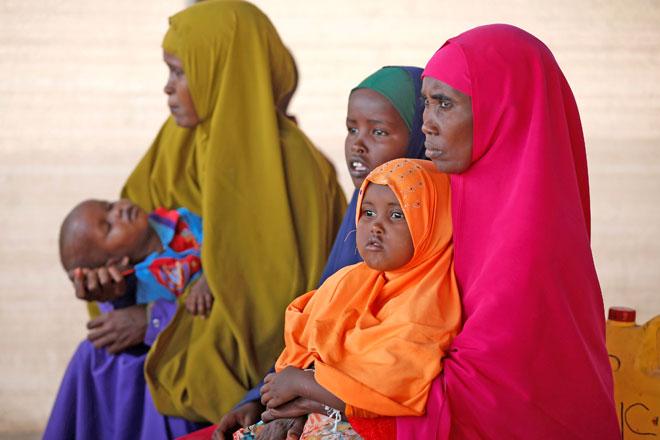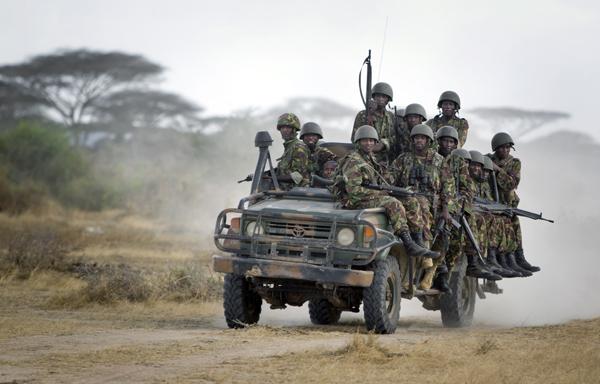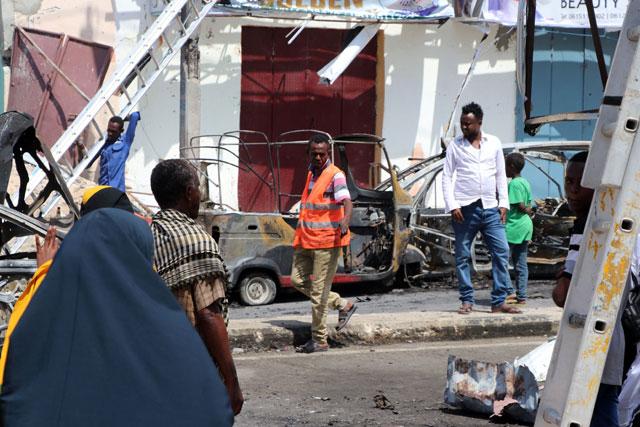You are here
Somali refugees in Kenya caught between ration cuts and war at home
By Reuters - Dec 19,2017 - Last updated at Dec 20,2017

Somali refugees wait to board a UN plane bound for Somalia, part of the UN's Voluntary Repatriation programme, in the Dadaab refugee camp, Kenya, on Tuesday (Reuters photo)
DADAAB REFUGEE CAMP, Kenya — Somali refugees in Kenya are free to choose whether to go home, a top UN official said on Tuesday, despite many families saying debts accumulated to feed their children after cuts in rations are forcing them to return to a war zone.
In October, a funding crisis forced the UN World Food Programme to cut basic food rations and cash in Dadaab camp in northern Kenya, housing nearly 240,000 refugees, by 50 per cent.
The United Nations said Dadaab suffered because it has been receiving Somalis for more than 25 years. Donors are focused on new conflicts like Syria and South Sudan that are fuelling the world's worst refugee crisis since World War Two.
"All the attention goes to new crises," UN High Commissioner for Refugees (UNHCR) Filippo Grandi said as he visited Dadaab on Tuesday. He told refugees that repatriation is their decision.
"At any stage in the process they can change their mind," he said. "We check and check and check."
But two families interviewed by Reuters on Tuesday said the food cuts forced them into debt to feed their children. To clear those debts, they volunteered to go back to Somalia in return for $150 per person — cash meant to help them begin a new life.
Cuts create debts
Mother-of-six Kahtra Nour Hassan has lived in Dadaab since fleeing her hometown of Kismayo in 2010 after being widowed twice by Somali gunmen. The 40-year-old will use part of the money from the UN Voluntary Repatriation Programme to pay debts of 40,000 Kenyan shillings ($400) to shopkeepers.
"There was not enough food," she said, her toddler Maksoud clinging to the bottom of her flowing yellow robe. "Many families [going back] have debts."
Another man chimed in, saying debts were also forcing him back to Somalia, about 90km away from Dadaab.
On Sunday, The Washington Post published extensive interviews with families who said debts were driving them home.
Kodeck Makori, a senior Kenyan official dealing with refugees, disagrees. "Somalia is now fairly peaceful... We don't think it's a war zone. If it was, why would they be going?"
Parts of Somalia, like Kismayo, have become more stable since regional administrations emerged in the last five years and African Union peacekeepers clawed back territory from Islamist Al Shabaab insurgents.
But parts of southern and central Somalia remain under the sway of insurgents, who are also mounting larger and more deadly bomb attacks in the Somali capital. One bomb killed more than 500 people in Mogadishu in October.
The United Nations says more than 2,000 civilians have been killed in Somalia since 2016, mostly by Al Shabaab. Drought has also ravaged the Horn of Africa nation, leaving more than half of the 12 million population dependent on aid.
Kenyan pressure
The United Nations launched the repatriation programme in December 2014 under pressure from Kenyan authorities, who threatened to close the camp in 2016. Since the programme began, nearly 75,000 Somalis have left Dadaab, including 32,000 this year.
British charity Save the Children, which works in Dadaab, says it is difficult to track the number of returnees because they are not registered, so they can not access food aid.
Yvonne Ndege, UNHCR's Kenya spokeswoman, said around 5,000 unregistered Somalis live in the camp, although Save the Children says the number is double that. The United Nations said 400 people repatriated through its programme returned this year.
More may come soon, London-based Amnesty International said in a report released on Monday.
"Refugees who fled drought, conflict and hunger and Somalia were coerced into returning in the midst of a severe humanitarian crisis," the report said. "Many now find themselves back in the same hopeless situation they fled."
Related Articles
MOGADISHU — Somalia's Al Qaeda linked Al Shabab militants stormed an African Union base manned by Kenyan troops in the country's southwest o
NAIROBI — Somali Islamist group Al Shabaab on Wednesday warned Kenya "will never be safe", threatening tourists and calling for more attacks
US Secretary of State John Kerry vowed support to Kenya on Monday in the battle against Somalia's Al Qaeda-affiliated Al Shabab, after calling for unity in the face of terror attacks.


















